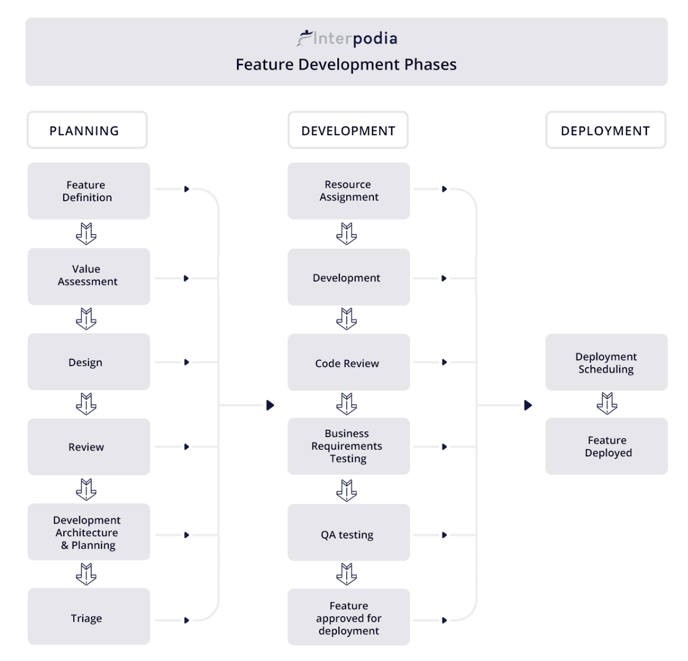At Interpodia we work very hard to deliver the best possible technology to our clients. We reinvest over 50% of our profits into product development and it is part of our mission statement to continue to make this investment to meet the ever-changing needs of the sport management community.
Product Development Process
At Interpodia our product department’s focus is on prioritizing development work that maximizes the value for our clients. Before we build anything, we start with a rigorous analysis process that helps us build the most useful, valuable, and effective features for our clients.
Our feature development can be broken down into two categories:
- Dashboard features that help sport administrators access and analyze their data, assist their members, and run their businesses.
- End-user features that simplify and improve your customer’s user experience as they’re purchasing membership, registrations, products, agreeing to waivers or declarations, etc.
Feature Development Phases
1) Planning:
- Feature Definition - user stories are defined for the feature including a list of acceptance criteria.
- Value Assessment - we follow a data-driven assessment process to ensure fairness and optimal use of developmental resources to maximize the return on investment for our clients.
- Design - we build mockups to determine the optimal user interface design and user experience for the feature.
- Review - internal, and sometimes external, stakeholders review the feature design and ensure that the requirements and design accurately and completely meet the business needs and address the user stories. The feature returns to the Design stage if edits are needed or it moves to the next stage.
- Development Architecture and Planning - the feature is analyzed by our development team and a development plan is put in place
- Triage - the feature value to cost is determined and it is triaged against other features to determine its placement on our development roadmap. Approved features move to development.
2) Development
- Resource assignment - appropriate resources (project managers, front-end developers, back-end developers, QA testers) are assigned to the work
- Development - development commences following agile methodologies
- Code Review - developers who did not work on the feature are assigned to review the new code to find opportunities for code optimization and to remove conflicts and vulnerabilities
- Business requirements testing - the feature is deployed to a development environment and the product team tests the feature to ensure requirements are met and the quality of the user experience is high. Feature moves back to the development stage if needed.
- QA testing - detailed process testing, regression testing, permissions testing and edge-case testing is performed. Feature moves back to the development stage if needed.
- Feature approved for deployment - stakeholders approve the feature for deployment
3) Deployment
- Deployment scheduling - the feature is slotted for deployment in the next deployment window
- Feature deployed to production environment across all sites
Custom Development
In certain cases the Interpodia product department will take on custom development requests. These fall into two categories:
- Contractual Development: Work that is included in a client’s contract, such as data migration; or
- Paid Development: Work that a specific client wants, or that multiple clients want, that is aligned with the product vision but is being requested to be built more quickly than the product roadmap

